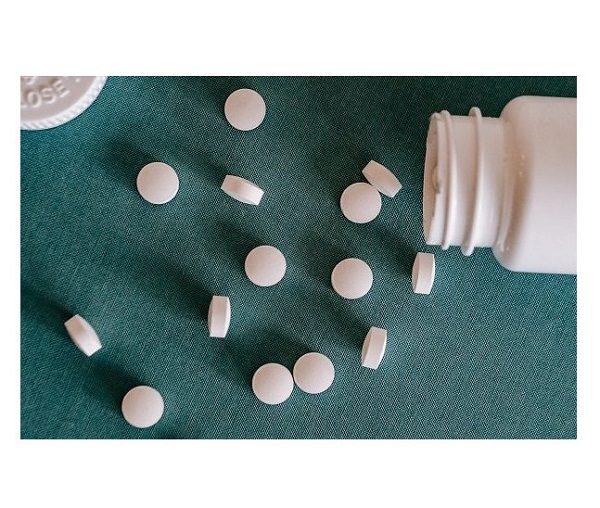ANNAPOLIS, MD—Governor Larry Hogan and Maryland’s Opioid Operational Command Center (OOCC) on Tuesday announced $10 million in block and competitive grant awards to help support programs around the state to address the opioid crisis. The grant funding, which will be distributed between July 2022 and June 2023, will be used to support prevention & education, enforcement & public safety, and treatment & recovery.
“Our administration has made it a top priority to put the resources and support systems in place at every level to expand access to treatment, and combat the heroin and opioid crisis,” said Governor Hogan. “These grants play a critical role in supporting the local and grassroots work taking place in our communities and health care systems to save lives and promote healing.”
$4 Million For Block Grants to Local Jurisdictions
The OOCC is distributing $4 million through its Block Grant Program, which ensures that all of Maryland’s 24 local jurisdictions receive a base level of funding to support overdose-related programs and initiatives. The program also takes into account local impacts of the opioid crisis and distributes half of the funds proportionally based on overdose mortality rates. These funds are distributed directly to local jurisdictions and will be administered by local health departments. The full list of programs that are being supported is available here. The biggest recipient of these grants is Baltimore City, which will receive $873,775 to support overdose response programs and teams. Baltimore County will receive $374,340 to provide continued support for peer recovery services, and Anne Arundel County will receive $256,976 to provide continued support for Safe Stations, as well as community and faith-based organizations.
$6 Million For Competitive Grants
The OOCC’s Competitive Grant Program will distribute an additional $6 million to fund 38 of the highest-scoring proposals received from over 90 state, local, and private community-based organizations. The final list of competitive grant awards is available here. Out of the grants awarded, 19 will be distributed to private and nonprofit organizations, and 19 will be distributed to state and local government agencies. Examples include:
- $396,090 to the University of Maryland to support data collection for fentanyl testing in Maryland hospitals.
- $260,233 to the University of Maryland Capital Regional Health to support expansion of SBIRT (Screening, Brief Intervention, and Referral to Treatment)
- $79,770 to MedChi to support distribution of and training for at-home drug deactivation and disposal systems.
- $148,607 to Anne Arundel Medical Center to support co-occurring mental health and substance use disorder treatment, behavioral health workforce development, training in SBIRT, and care coordination services.
- Several county school systems will receive grants to support youth-based prevention programs, including Howard ($233,250), Worcester ($113,360), Talbot ($80,000) and Carroll ($22,100).
- Grants for enforcement and public safety programs that support peer recovery and treatment services include $206,909 for Allegany County, $107,261 for the Washington County Sheriff’s Office, and $69,615 for the Baltimore County Circuit Court.
“We are honored to support so many great projects for the year to come,” said OOCC Executive Director Robin Rickard. “Each of these programs will make an enormous impact for those living with the disease of addiction, from early prevention efforts to lifting people up on their recovery journey.”
Additional Awards Announced Last Month
In addition, last month, the OOCC announced an additional $7.5 million in grant awards to support local jurisdictions with implementing the requirements of the Opioid Use Disorder Examination and Treatment Act of 2019. This legislation requires that all local detention centers implement programs to screen incarcerated individuals for opioid use disorder, offer peer recovery specialist services and counseling services to develop re-entry plans for individuals upon release, and to offer all three FDA-approved formulations of medications for opioid use disorder, such as methadone or buprenorphine, in their facilities. The grant awards will support projects in 16 local detention facilities, a summary of which can be found here.
Opioid Restitution Fund
The OOCC anticipates being able to offer more available grant funding in the coming months through the Opioid Restitution Fund, which was established to administer all funds received at the state level from legal settlements involving prescription opioid manufacturers and distributors. The State of Maryland is expected to receive approximately $400 million from settlements with Johnson & Johnson and three prescription opioid distributors over the next 18 years.
Final Inter-Agency Opioid Coordination Plan
In addition, the OOCC released the final version of Maryland’s Inter-Agency Opioid Coordination Plan for 2022–2024. The plan details goals and strategies for reducing overdose-related morbidity and mortality in Maryland. The plan was recently completed following a public comment period, during which time the OOCC received and considered input from dozens of Maryland residents. The plan identifies eight goals to support the overarching goal of reducing overdose-related morbidity and mortality in Maryland, which include:
- Improving Statewide Infrastructure for Opioid Initiatives
- Promoting Youth Resiliency
- Increasing Awareness of Substance Use Disorder
- Expanding Harm Reduction Services across Maryland
- Promoting Comprehensive Care Coordination
- Expanding Maryland’s Crisis Response System
- Expanding Access to Evidence-Based Treatment for Opioid Use Disorder
- Supporting Recovery Communities
The final coordination plan is available here.
Photo by Alex Green from Pexels
Do you value local journalism? Support NottinghamMD.com today.

